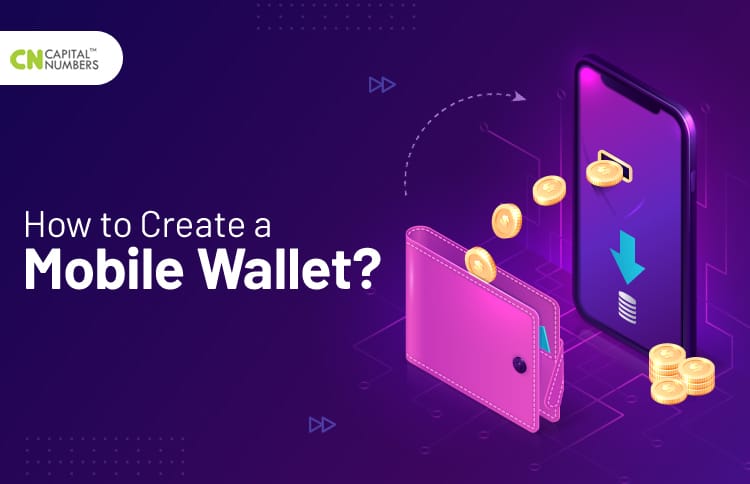How to Create a Mobile Wallet?
Table of Contents
While Peer-2-Peer (P2P) money transfer apps had started making inroads much before the pandemic struck, consumers’ massive shift to digital during COVID-19 has further pushed people to rely on these apps even more. Peer-2-Peer payment apps come with built-in features and facilitate cashless money transfers through linked bank accounts/cards. They’re swift, secure, and seamless, and make money transfers through mobile devices a breeze.
eMarketer’s latest estimates indicate that Peer-to-Peer (P2P) mobile transactions will hit $390 billion in 2020. In the US alone, P2P mobile payment users will rise to nearly 73.8 million by the end of 2020.
These numbers clearly show the enormous potentials of these apps in the coming years, and businesses’ need to invest in them to boost growth.
These apps have made splitting bills, recharging mobiles, booking trips, etc., a lot easier. Consumers needn’t dig through their wallets to find their cards, swipe, wait for authorization, and sign. Instead, they can use P2P payment apps to transfer money with just a few clicks.
So, what are Online Money Transfer Apps?
P2P or Peer-to-Peer money transfer mobile apps are mobile wallets that allow users to transfer money to one another electronically. Users need to link their bank/card details with the apps to send/receive funds seamlessly in the quickest way. These apps eliminate the need for ATM cash withdrawals or checkbooks, thereby promoting cashless transactions.
They’ve simplified money matters between friends and family and made it a lot easier for users to shift their cash while on the move. So, what are the most extensively used P2P payment apps in the market? Here’s a look:
Most Popular P2P Money Transfer Apps in 2020
| P2P Money Transfer Apps | Benefits |
| PayPal | Offers free person-to-person transfers |
| Google Pay | Comes preloaded with many Android phones |
| Apple Pay | Works in iMessage |
| Samsung Pay | Works at older magnetic stripe terminals |
| Venmo | Connects to Facebook contacts |
Looking at the growing adoption of P2P mobile payment apps, many businesses plan to develop these apps to step up their game.
If you’re one of them, follow the steps below and build a P2P payment solution that’s cutting-edge.
How to Build a P2P Money Transfer Mobile App?
- Determine Your P2P Service
To build a P2P money transfer app, first, you must note the type of P2P payment services you will offer your client. These services may include either of the following:
Banking Services Zelle and Dwolla are bank-centric P2P payment apps that help users directly draw money from and deposit money into bank accounts without keeping a stored currency account.
Discrete Services Independent or discrete services like PayPal and Venmo help users store money in digital wallets before offloading it in some bank or sending it to others.
Social Media Companies like Facebook and WeChat offer P2P payment services to help users transfer money even while texting.
Mobile OS Mobile device/OS manufacturers like Android Pay and Apple Pay help users transfer money for mobile recharges, bill payments, etc., within their ecosystem.
So, start the development process, keeping your P2P payment app service in mind. Each of these services allows frictionless money transfers through encrypted layers of in-app security.
- Incorporate the Essential Features
After you’ve decided on the app service, incorporate the following core features to make your app robust.
Fingerprint Security Lock Add a fingerprint lock in the app so that bank details remain secure and untampered.
Digital Wallet Integrate a digital wallet where users can safely store all information (e.g., bank details, special offers, due dates, in-app funds, etc.).
Notifications Add push alerts to notify users about upcoming bill due dates, discounts, and other wallet activity from time to time.
Send/Request Money Include the send/request feature so that users can safely send money to and request money from other users.
Billing/Invoice Generation Let users scan and send bills, generate transaction invoices, and store them within the app.
Bank Transfer Give users the flexibility to directly transfer funds to and from their bank accounts.
Transaction History Add this feature to help users choose the date range of their transactions and get a summary of all payments made/received between a specific time period.
Chatbot Integrate a chatbot to address all user queries that may arise due to wrong deductions from wallet, a lost Internet connection, and other points of disputes during money transfers.
Cryptocurrencies Include a crypto wallet to help users buy/sell cryptocurrencies like Bitcoin or Ether and perform crypto transactions within the app.
- Build a User-friendly UX
Merely incorporating the core features isn’t enough for a P2P payment app to succeed. Remember, your app users do not want to waste time figuring out how everything works. Therefore, the UX should be modern, simple, clean, and attractive. So, don’t complicate the UI/UX. Keep it minimal.
- Consider the Security Levels
After you’ve added the essential features and an intuitive design layout, focus on the security standards and make sure you keep up with them. For example, integrate security features (i.e., Touch ID and face recognition) to help users unlock the app. Activate a two-factor authentication (that includes password and verification code authorization) to prevent hacks. Besides, comply with PCI-DSS standards to safeguard all confidential information.
- Choose the Revenue Model
The next step is to finalize the monetization strategy. Without this, all ideas, high-end features, and layouts will be of no use. So, what would be a good revenue model for your P2P payment app? Well, you can choose either of the following or both:
Premium Service You can lead users to pay a certain fee to unlock premium features (e.g., cryptocurrency transactions, chatbot, currency conversion rates, text messaging facility, etc.).
Affiliate Marketing You can also let banks display and advertise their products on your app page, and earn revenue each time one of these ads gets clicked.
- Conduct Testing
Finally, bring your QA team together to conduct functionality and usability testing, fix critical issues, and release a high-quality P2P payment app at speed.
How Can Capital Numbers Help?
Because Capital Numbers has extensive experience in delivering stellar mobile and web apps at scale, it can always help you create a tailored P2P payment app solution that drives sales. Our offshore mobile app development service will go all out to meet your business specifics.
With 1500+ successful projects under its belt, Capital Numbers always finds the right balance between quality, price, and project needs.
So, if you’re interested in being a part of the explosive growth of mobile P2P, contact us.
We promise to put your needs first!


 Web Development
Web Development Cloud Engineering
Cloud Engineering Mobile App Development
Mobile App Development AI/ML/GenAI
AI/ML/GenAI E-commerce
E-commerce Software Development
Software Development UI/UX
UI/UX QA
QA Dedicated Teams
Dedicated Teams











